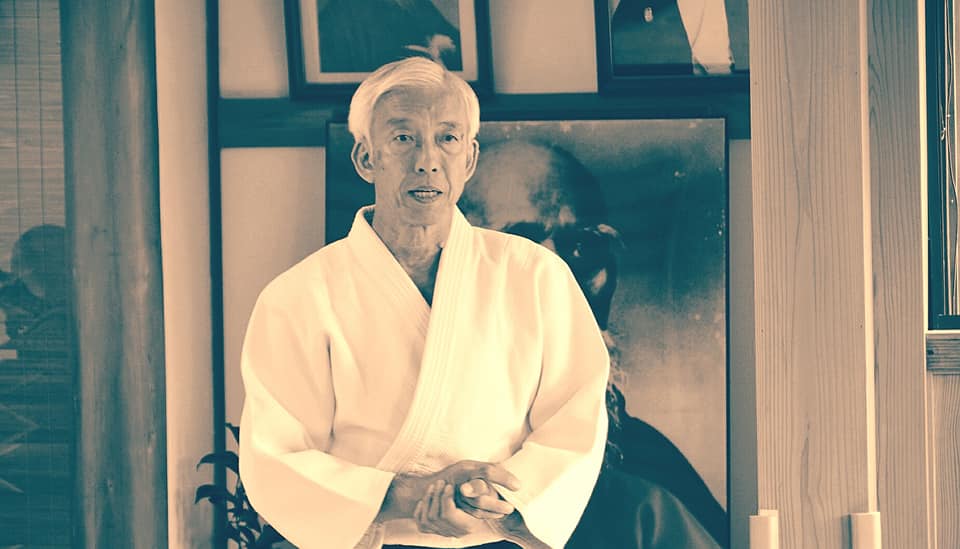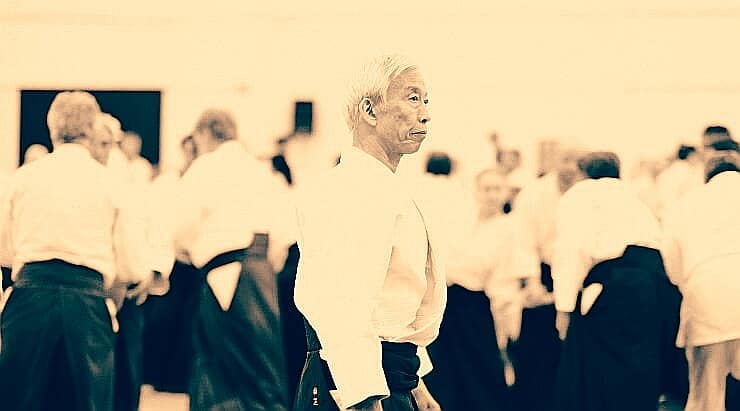There are those who say that empty-handed technique (taijutsu) is the basis of aikido, while others assert that aikido is a so-called “comprehensive budo” (sogo budo) that includes the use of weapons.
What is your view?
It is certainly true that founder often trained with weapons like the ken (sword) and jo (short staff) and explained that these were aikido; but most of my training has been under my father, the previous Doshu, so I am more inclined to go with the interpretation he espoused throughout his life, which is that empty-handed technique is the foundation of aikido.
This is not to say there is anything wrong with training with the ken and jo, and people interested in pursuing them should by all means do so. There’s no reason to prohibit such things. It’s perfectly fine if people want to use these as part of their own training, but I think it is a mistake to insist that they are [the basis of] aikido.
Did you ever have an opportunity to train under the founder?
Many people have asked me that question. I know it would sound good and fit the image for me to be able to say “Yes, I had a lot of special training under the founder,” but that’s just not the case. (laughs) I was around him from the time I was small, so I watched him quite a bit. I lived under the same roof with him and often watched him train, and I also attended his morning classes, but I don’t think there was anything special about my training under him.
Sometimes the founder would teach the whole class, but there were just as many times when my father would be teaching and the founder would only come in for a while to add his own general explanation about whatever the class was doing. That was about the extent of my training under him. Sometimes during the morning classes he used to call me over to have a friendly chat, as grandfather and grandson, but he never told me to get out on the mat and practice.

Did you ever find him a little frightening?
Not particularly. I can imagine that his students may have found him that way given their teacher-student relationship, but I was just his grandson and he never really lost his temper with me the way he might have with others. In fact, I don’t think he ever got angry with me about anything, even when I was small and used to sit there and hit him on the head for fun. I don’t remember it, but they say I used to do that! (laughs)
The Ueshiba family’s relationship to the Omoto religion goes back nearly eighty years. What significance does Omoto have for the family now?
Obviously my grandfather was highly influenced by the Omoto sect in the process of creating aikido, and particularly by Onisaburo Deguchi Sensei. My father was brought up in that environment, but I don’t think he was ever influenced by it to the extent that his father was. He was always conscientious to maintain and observe the various associated rites and functions, but he didn’t visit Omoto all the time the way my grandfather did, and I don’t either. The founder himself had an Omoto shrine built, and when he passed away a lock of his hair was enshrined there in the traditional manner.
Whenever we hold the Taisai (lit. “great festival,” an annual ceremony commemorating the passing of the founder), we have the Omoto priests associated with that shrine come to perform the rites, but this tradition is based on the founder’s relationship with Omoto, not the Ueshiba family’s. In fact, the Ueshiba family temple is still Kozanji in the city of Tanabe in
Wakayama Prefecture, and that is where the founder’s ashes are interred. Morihei Ueshiba himself happened to have been influenced a great deal by Omoto in the process of formulating aikido, so that relationship remains to an extent; but I think the relationship with Kozanji as the ancestral family temple is the deeper of the two.
Source: Facebook/Aikido



